Affiliate links on Android Authority may earn us a commission. Learn more.
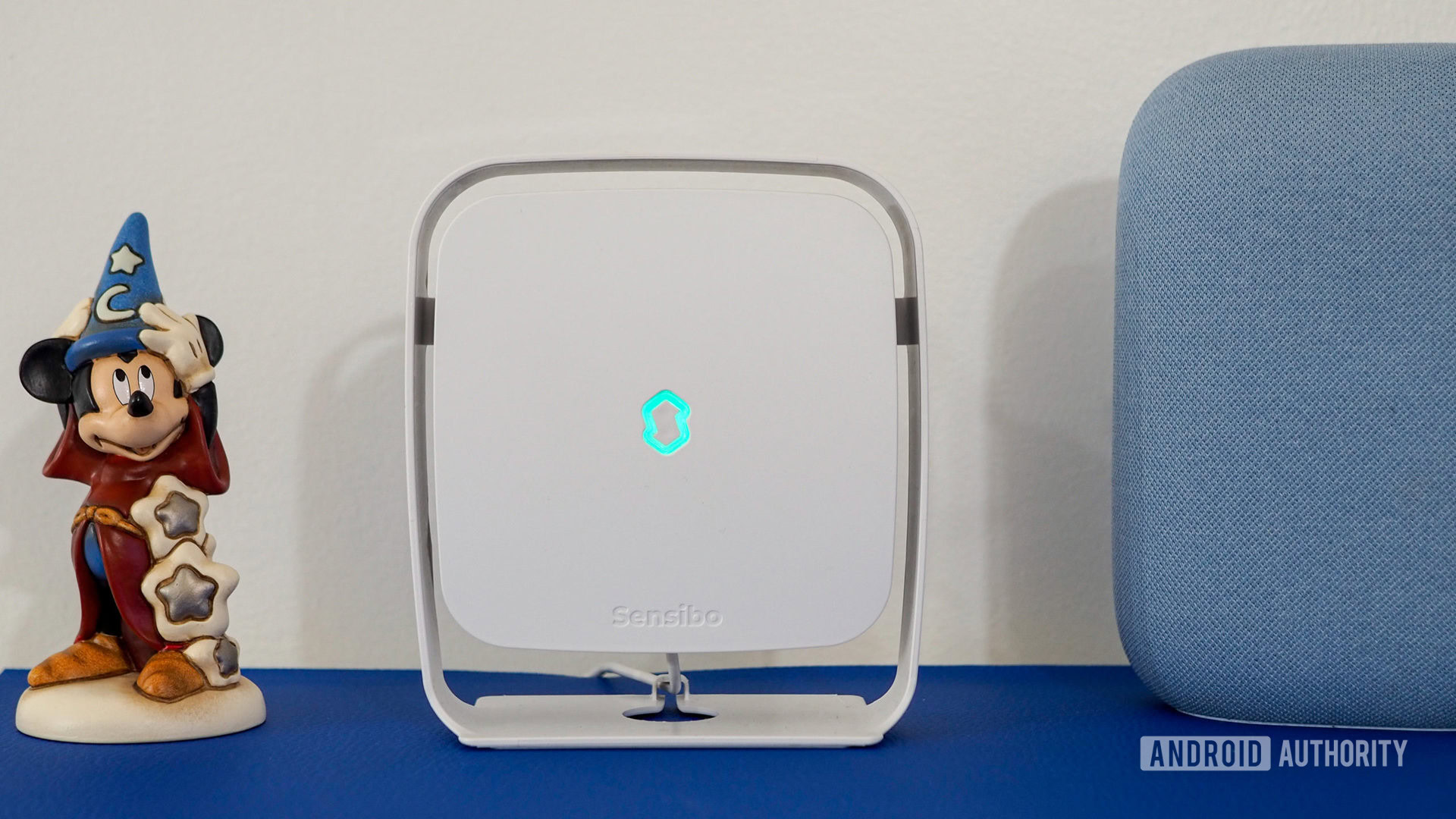


Sensibo Elements
What we like
What we don't like

Sensibo Elements
I have had an on-and-off allergic cough since May 2019. You can’t imagine how “fun” it has been to navigate two years of a deadly epidemic where coughing is the most notable outward symptom all while getting violent coughing fits every hour or so in public. Recently, that cough got diagnosed as a result of chronic asthma, forcing me to rethink a lot of things about my life, especially the quality of the air that I breathe.
While I can’t do much about the outside air here in Paris besides avoiding second-hand smoke and extremely polluted areas, I still have some control over the air in my own home. I had been looking at connected air quality monitors for a few weeks when Sensibo reached out to me about the new Elements — a perfect coincidence between personal need and product release.
A few months later, the Sensibo Elements has become a constant indicator in my apartment and a welcome addition to my smart home collection. It sits idly in the corner of our office/living room, and my husband and I glance at it every now and then to see if we should aerate the room. Green is good, orange is a warning, and red is bad. It’s as simple as that, but the sensor technology and capabilities of the Elements are much more intricate than this simple LED indicator would lead you to believe.
Six sensors in one
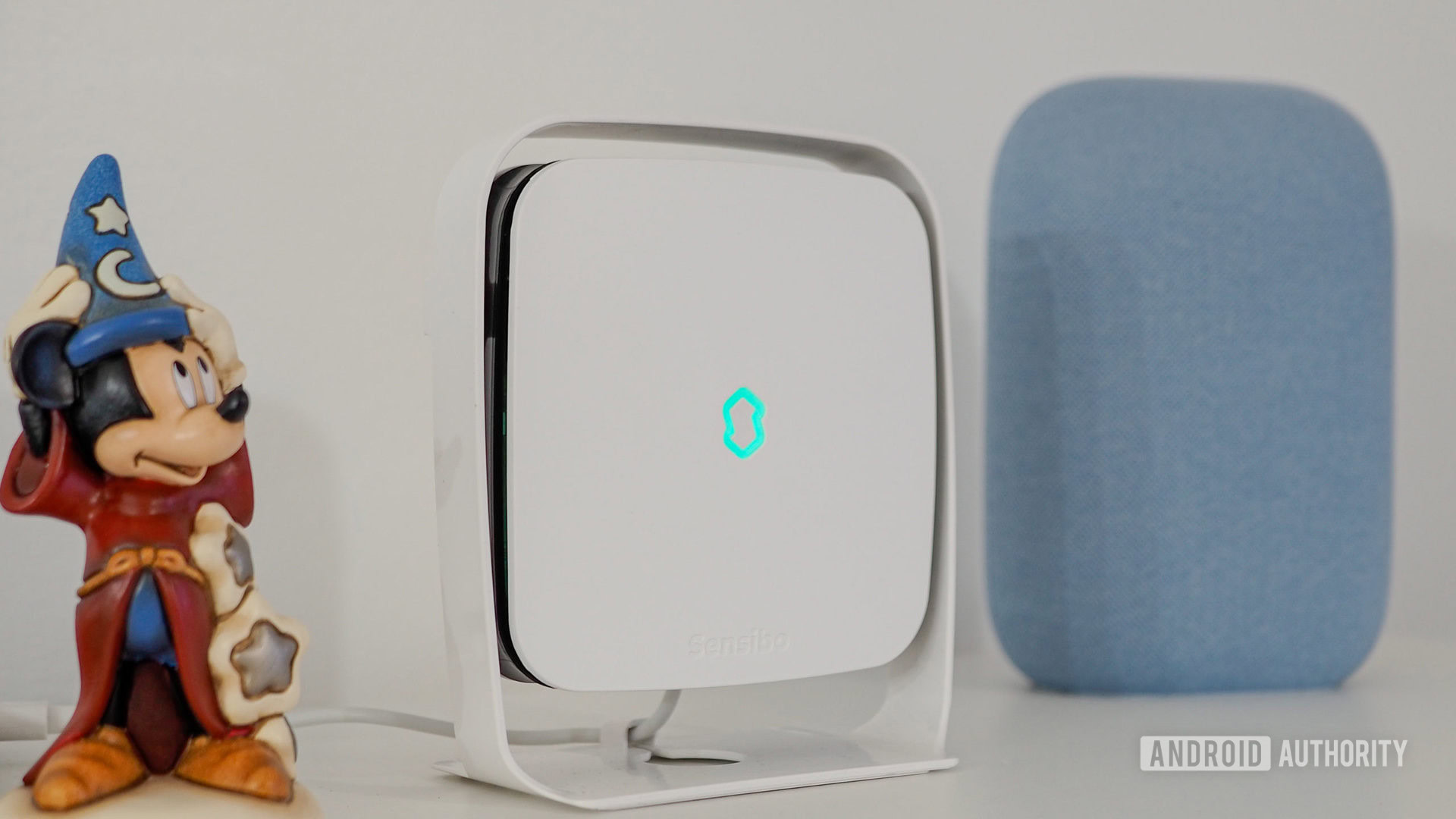
There’s an air quality monitor for everyone these days, from cheap temperature and humidity monitors with an LED display to high-end connected monitors with multiple sensors. The Sensibo Elements falls on the higher end of the spectrum with six different sensors: temperature, humidity, VOCs, PM2.5, CO2, and ethanol. For anyone who isn’t a chemistry or air quality savant, let’s explain what those last four are.
- VOCs stand for Volatile Organic Compounds. They’re found in perfumes, sprays, and pollutants, but also in various materials and coverings in new buildings. They’re often generated when you cook, clean, paint, or spray perfume or deodorant.
- PM2.5 are fine suspended particles with a smaller diameter than 2.5 microns, i.e. what we’d call dust. They’re usually generated when there’s smoke or exhaust, and they can penetrate the lungs and are tightly associated with lung cancer.
- CO2, or carbon dioxide, is found in every house because it’s part of the air we exhale every time we breathe. It is also generated from combustion and can reach higher than normal levels if you have a faulty water heater or furnace, or if your house is poorly ventilated.
- Ethanol is an alcohol found in air fresheners, perfumes, and many scented sprayable or evaporating products.
All of these occur naturally in any home, at lower levels. Higher concentrations, however, can cause respiratory irritation, fatigue, dizziness, headaches, nausea, and yes, cough and asthma flairs as is my case.
The Sensibo Elements categorizes each of these into good (green), moderate (orange), and high (red) levels. It also calculates the overall air quality and assigns a score to it using the same good, moderate, and high indicators.
It’s worth noting that the Elements is not a traditional smoke detector, nor does it have carbon monoxide or radon sensors. If you want to monitor those, you need to look at other models. The Airthings View Plus ($296 on Amazon) is very similar to Sensibo’s Elements, but replaces the ethanol sensor with radon. The lüft ($249 on Amazon) measures radon and pressure, but skips the ethanol and more crucially, the PM2.5 sensor. Smoke and carbon monoxide detectors are often standalone, without other air quality sensors.
How accurate is the Sensibo Elements?
I don’t have other multi-parameter air quality monitors to compare it against, but my month with the Elements didn’t result in any noticeable anomaly. VOCs climbed up each time we cooked and dropped down when we ventilated, ethanol shot up whenever we sprayed something next to it, and CO2 was always a little bit higher when we were in the room versus when we weren’t. All of these are logical and expected measures.
What I can compare are the temperature, humidity, and PM2.5 readings. My Tado thermostat sits about two meters (six feet) away from the Sensibo Elements and measures temperature and humidity too. In general, the Tado and Sensibo have values within the same range — a difference of one Celsius degree or a single percent of humidity can be attributed to their slightly different location or different calibration.
My new Levoit Core 400S air purifier is often placed about a meter (three feet) away from the Elements and the two have similar PM2.5 readings. When I see an orange or red indicator on the Elements, the air purifier is likely already on, or I can trigger it to clean up the air.
Monitoring air quality with the Sensibo Elements
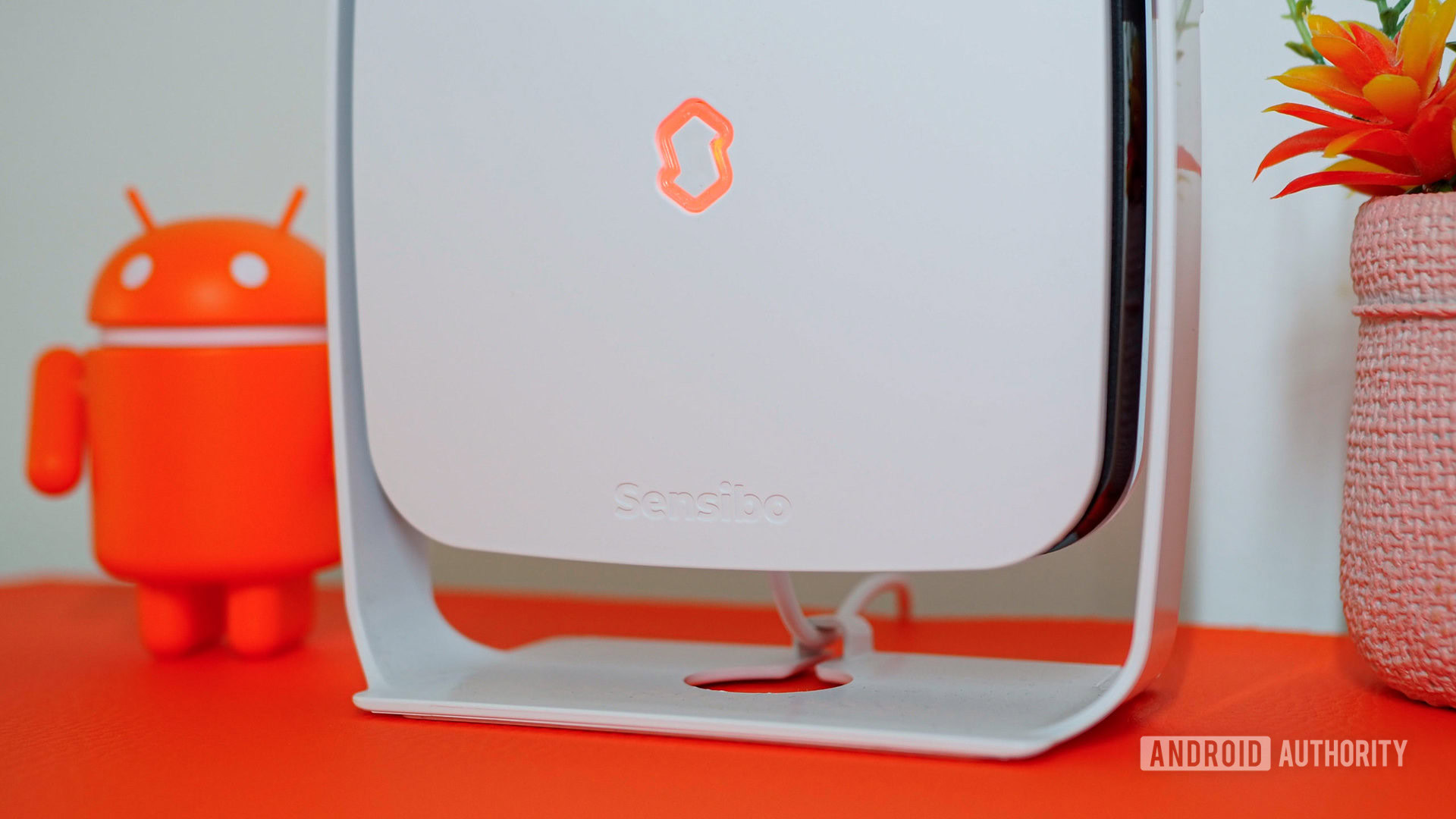
The easiest way to tell if something is currently off with the air in my home is to look at the Sensibo logo-shaped LED light at the front of the Elements.
I was relieved to discover that the base status of air in my apartment is good. The LED stays green most of the day, only veering to orange or red when I cook or when it’s been a while since I’ve aerated the room. At least I’m now sure that my indoor air is not actively harming me by default, and it’s only my own normal everyday activities that generate some harmful substances.
I discovered that the base status of air in my apartment is good. But the Elements reminds me to aerate the room a lot more often than I usually do.
Because of its ambient light nature, the Elements has quickly become a frequent reminder that I should aerate the room or trigger the air purifier. We do this a lot more often now, and I consider that a positive outcome for sure. Even in the middle of winter and near-freezing temperatures, we’re making a conscious effort to ventilate our apartment — something we rarely did last winter. Anything to get rid of the nagging orange or red light.
The Sensibo app provides a lot more context around air quality. Whenever I’m curious about the reason for an orange or red light, I can drill down to see the reason. Every metric is separated with graphs for the last hour, day, week, or month.
I can also receive notifications on my phone whenever something is off, a neat feature when I’m not near the Elements.
And finally, I integrated it with Google Assistant (there’s also an Alexa counterpart). Now, I can simply ask the Nest Audio in the room for more details without having to dig into the app.
All of these voice commands are supported. The only metric that doesn’t seem to be assigned a command is the ethanol level.
- What’s the temperature
- What’s the humidity level
- What’s the air quality
- What’s the CO2 level
- What’s the particulate matter level
- What’s the VOC level.
What I’ve learned about the air in my apartment
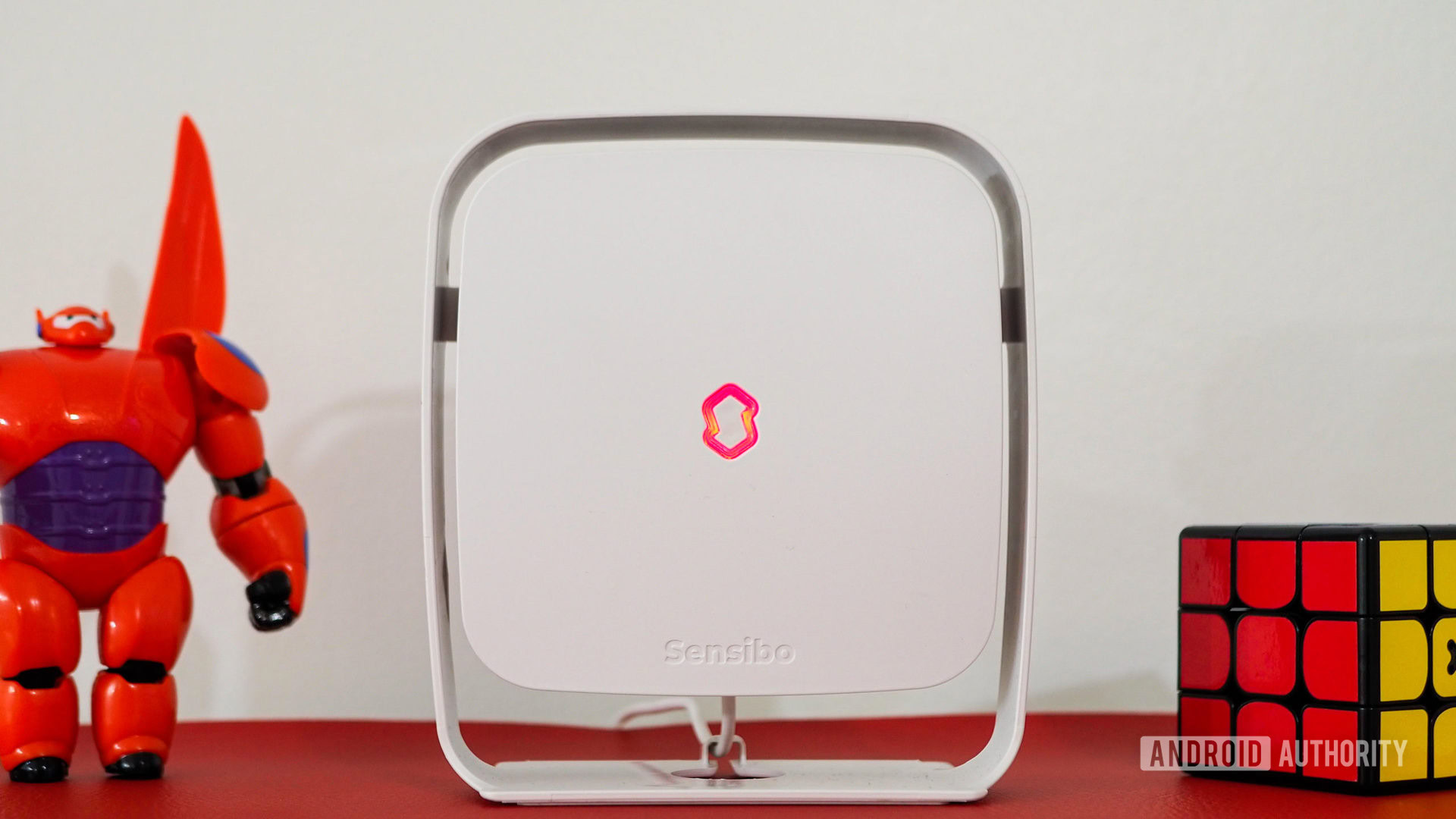
The first thing we tested when we got the Elements was spraying a bit of deodorant next to it. For a few months, I’d been experiencing some irritation each time my husband used that spray, sometimes resulting in coughing fits. When we saw the number of VOCs and ethanol climb so ridiculously high, my husband just walked to the trash and threw his deodorant. He was already talking about moving to something less harmful for me, but seeing it clearly in number form was the final straw. He understood why this was affecting me so much.
After seeing how many VOCs a single deodorant spray caused, we threw it in the garbage.
The Elements eased our minds regarding PM2.5, CO2, and ethanol. Over the course of a month, these numbers have stayed within the lower limits, so we’re not concerned about them long-term. Still, it’s nice to know that we’ll be notified if they ever go up.
VOCs are the biggest variable in our apartment, and in any other home I suppose, and they’re immediately linked to our presence and activities within this tight space. Cooking is the biggest culprit, but they even climb up from actions we would never consider as harmful, like brewing tea or microwaving water or milk. Even waking up and coming to my desk in the living room causes VOCs to shoot up each morning. The first few days, we obsessed over the VOC-triggered orange and red indicators on the Elements, but we’ve since accepted them as part of just living. We only start questioning them when they last for more than an hour.
At first, I obsessed over the high VOC levels, but I've since accepted them as part of just living. I learned that the worst thing for air quality in my home is me.
And funnily enough, the best air quality we recorded on the Sensibo Elements was when we were on vacation over the holidays. I guess I learned that the worst thing for air quality in my home is me.
What do you do with this air quality information?
After ditching the deodorant and aerating the apartment more often, my asthma was more under control. We realized nothing is inherently wrong with our indoor air, but we also became aware that cooking, cleaning, and simply living in an apartment can cause some substances to accumulate, and those could harm me.
Then my asthma and cough came back around springtime, so we decided it was time we invested in an air purifier to go along with the Sensibo Elements. The purifier can get rid of cooking smells and VOCs faster than aerating, and it saves me from potential irritations. Plus, ventilating takes forever and is not always practical in freezing temperatures or scorching heat. So far, things seem to be under control again.
But since the air purifier only measures PM2.5 on its own, it doesn’t get automatically triggered when VOCs or other substances are detected. My next step will be to figure out an automation that accelerates the air purifier each time the Elements detects something wrong, be it VOCs, ethanol, or CO2.
Sensibo Elements review: The good and the bad
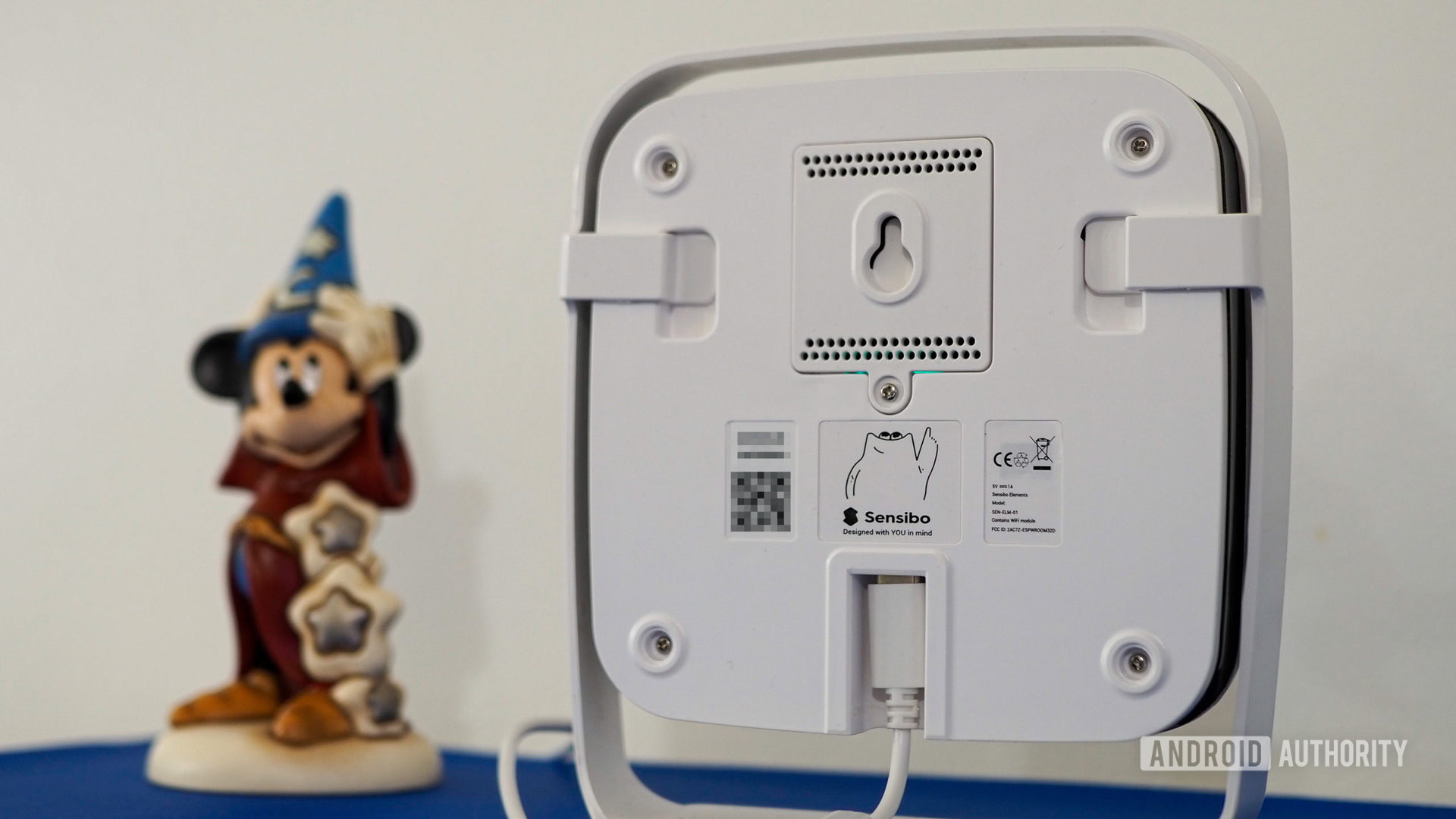

The Sensibo Elements uses USB-C for power, so you can simply use an existing multiport wall charger to plug it in. I like that. It also looks clean and inconspicuous enough.
It acts like a constant watchful eye over the air in your home. Just like a smoke or monoxide detector, you may never need it, but you’ll be very happy to have it that one time when things go haywire. And if you have some respiratory or allergic issues like me, it’ll help you identify some irritants and remind you to ventilate your house more frequently.
You may never need an air quality monitor, but you'll be very happy to have it that one time when things go haywire.
The Elements also integrates with the rest of Sensibo’s portfolio, allowing you to trigger the company’s own air purifiers or air conditioners any time it senses that things are wrong.
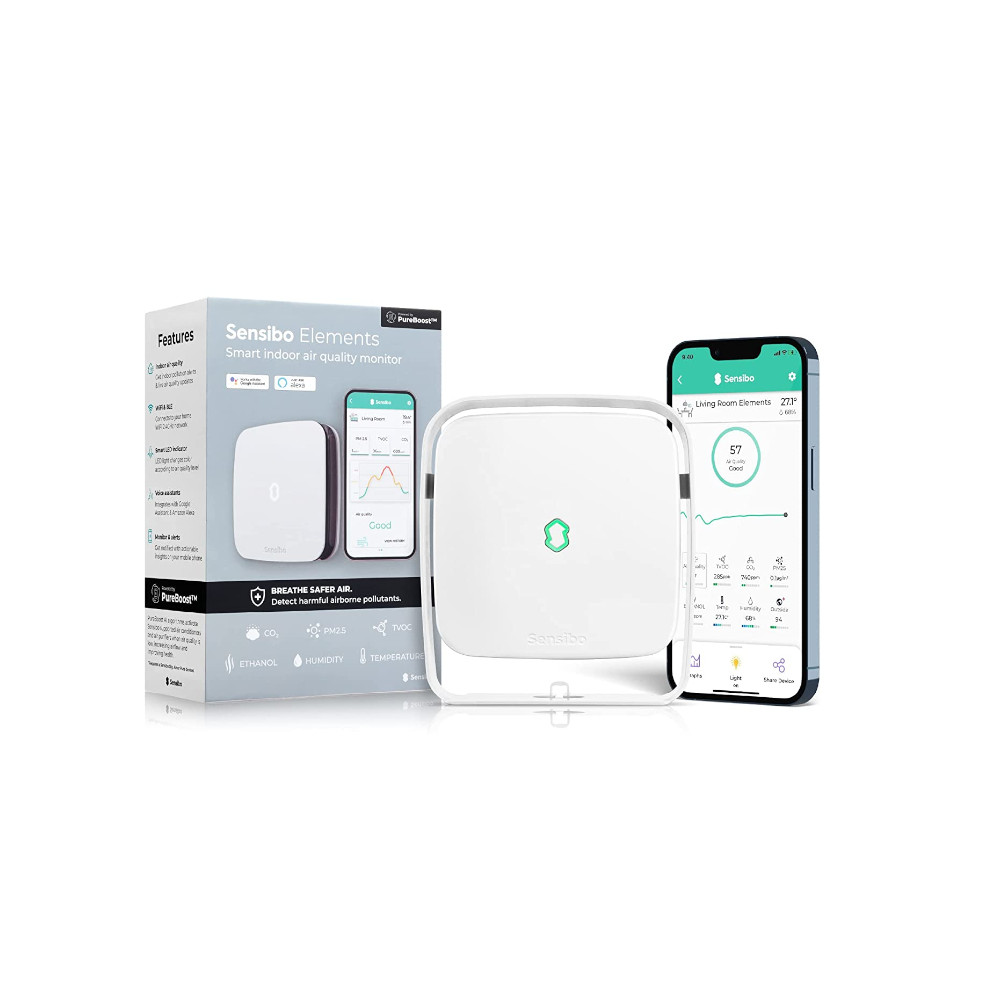

I have two small issues with the Elements. First is the fact that despite all the modern tech, this smart home gadget is using a 2.4GHz-only Wi-Fi chip, which means that you’ll need to find a way to decouple your 2.4GHz and 5GHz router bands. Most routers allow this, but some like Google’s Nest Wifi Pro don’t, and in that case you won’t be able to pair the Elements to your Wi-Fi at all.
The second issue is pretty minor now and it’s related to the Elements’ pricing strategy. The device’s MSRP is supposed to be $259, which is in line with the Airthings View Plus ($299) and lüft ($249) I mentioned earlier, as well as the similar Awair Element ($299). But the sales price has been way lower, at $179 since the Elements’ launch.
Sensibo is no longer locking weekly and monthly graphs behind a paid subscription. Only the outdoor air quality data is paid now.
Now, this seemed like a fantastic deal, but Sensibo hid (at first) two important features behind a paid $4.99 monthly subscription (or $2.49 if you commit to an entire year), without mentioning them anywhere in the product’s page: weekly and monthly graphs and outdoor air quality. Thankfully, the company has realized the error of its ways and decided to bring the graphs over to the free tier; after all, you’re paying for the hardware, so it was unfair to charge for data it’s already collecting. Outdoor air quality and notifications remain a paid feature, but that’s more excusable because the data is not coming straight off your device but from Sensibo’s servers.
Overall, if you don’t care about radon levels, the Sensibo Elements is a great choice among other air quality monitors. Just beware that you may need a standalone air purifier if ventilating the room doesn’t end up being enough of a solution.